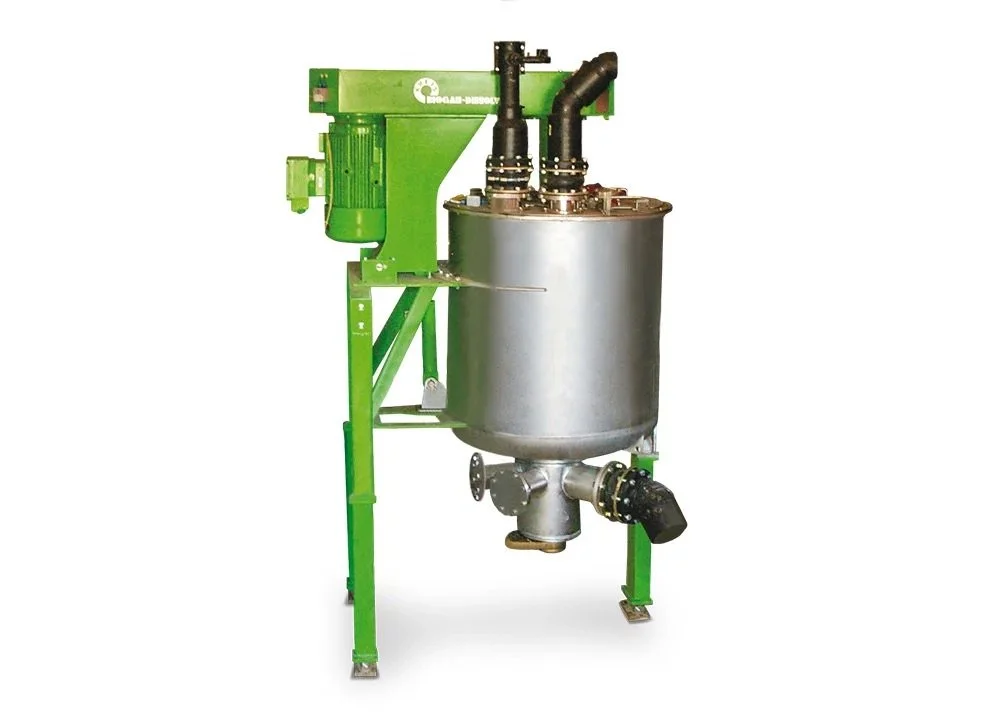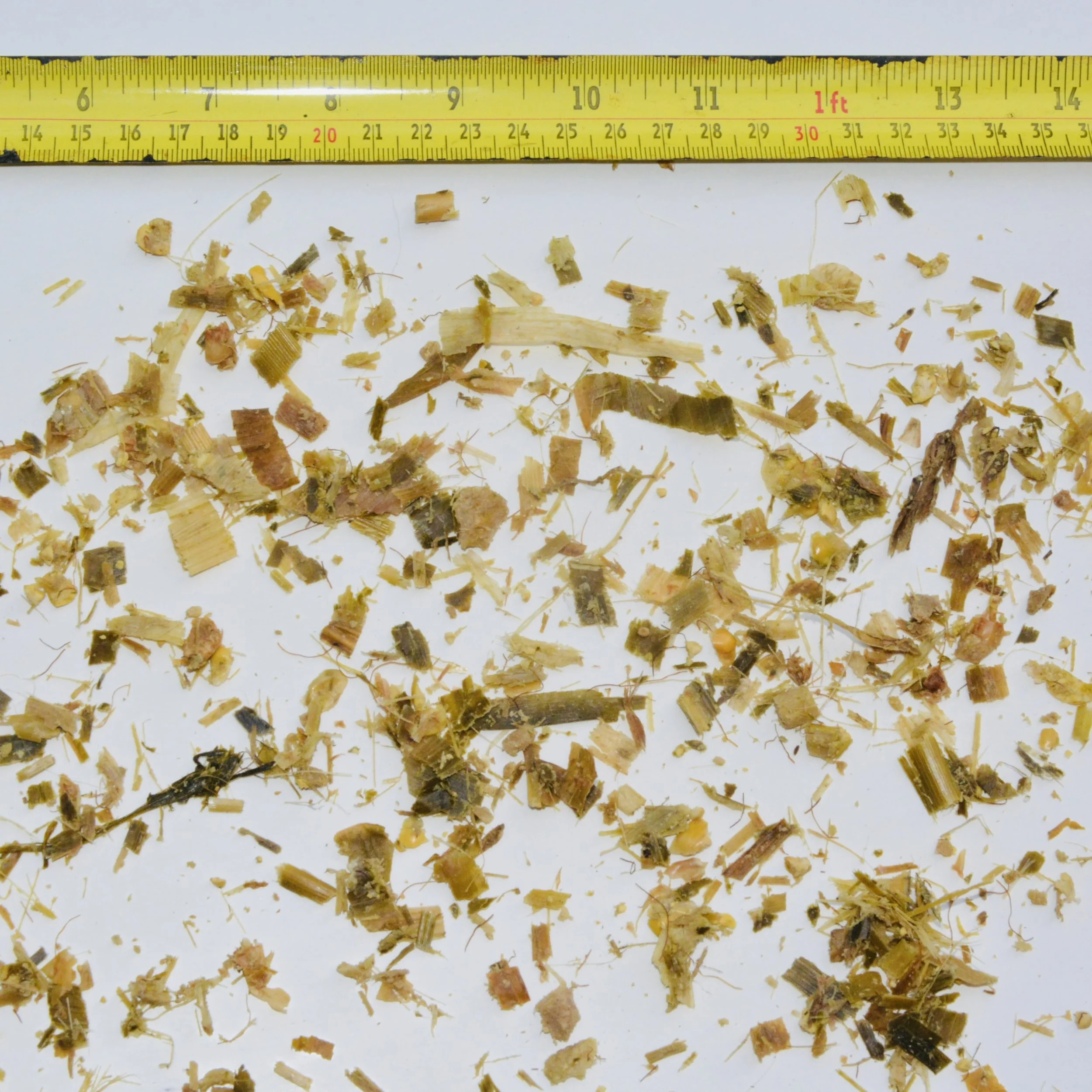Silage chop length for AD plants
There are lots of articles on this website about the importance of chop length so why another one? Well previously I have concentrated on how the chop length influences the stability of the silage once its open to the elements, or how chop length effects aerobic stability. This is important to all producers of silage but the chop length of silage for an aerobic digester is super important for more than the usual reasons.
Why is chop length so important to an AD plant?
The bacteria you’re feeding in an AD tank might be very similar to the bugs in a cows stomach, but the dinners they receive are somewhat different. In the cow, by the time the silage reaches the little fellas, it’s been fully processed by the cows front end, by her teeth and saliva. An AD tank doesn’t have teeth so the silage needs to be prepared before it gets to swim with the bugs.
Envitec Biogas Kreis Biogas Dissolver
Some systems will include a forage shredding element, a kind of silage food processor, whilst others just rely on mixing pumps to introduce an element of maceration. What ever your system, the shorter the chop length, the greater the surface area exposed to the bacterial action. Greater surface area will (generally) result in quicker digestion and a more rapid gas production. A shorter chop length and bigger surface area will also reduce the amount of residual energy being expelled into the digestate.
Is shorter always better?
Almost but not always; because it depends on the fermentation vessel. In a traditional circular tower or tank then the rule of shorter is better is pretty robust but in a horizontal flow system it might not be so simple. In a horizontal flow system you are relying on a plug to prevent back-flow so the forage needs to mat together. Chopping extra fine it can sometimes be just too short to form an effective plug.
With this in mind, I’m not proposing to advise you on the ideal chop length for your digester. This is the job of the plant designers for a couple of reasons. Firstly they will have designed the plant to suit a certain type of material, and secondly, they know far more about the effects different chop lengths will have on the gas yield in their system.
My message is just to stress how important it is to set a target chop length with your forage team or contractors.
Don’t just set it and forget it when it comes to chop length
So you might have agreed an ideal target chop length for your forage maize or rye with the plant designers and you might have told your contractors - at some point…. But that’s not enough because this is (as stated earlier) really really important.
Chopping maize with Krone Big X
Get the chop length wrong and you lose out in lots of areas. Firstly the silage won’t compact as well in the clamp and it’s also going to be more vulnerable to aerobic instability. In the worst cases you can lose 40% of the energy value of the crop whilst it’s sat there in the clamp. And this is usually an invisible loss, as the aerobic microbes turn the sugars and starches into heat, carbon dioxide and ethanol.
When what’s left of your silage reaches the intake to the AD plant, the power required to drive your intake processor or macerator will be much higher if your target chop length wasn’t achieved. Then once in the tank the digestion will be slower and (probably) the amount of energy escaping into the digestate will be greater.
Making sure your target chop length is achieved
So it’s important to achieve that target chop length, really really important; and this is how you can guarantee it is achieved.
Firstly get it in writing with your forage production team, either in house or an external contractor. Make the chop length part of the contract and confirmed in writing. And I know you trust your guys so there is no need for this…. But there is because the temptation to chop a tiny bit longer is really too much for some.
The cost of chopping shorter.
Imagine your target chop length is 5mm for your maize feed stock (for non AD plant operators this will be almost unimaginably short but trust me, 5mm is quite normal). If your contractor just dials up a tiny bit more speed on those feed rollers to give you a 7mm crop, nobody is going to notice and he might get finished a bit earlier too.
Now if you were chopping 5000 tonnes of maize at 5mm the contractor might burn around 3750 litres of fuel on the harvester with the team running for around 26 hrs. Increase the chop length to 7mm and that fuel use might drop to around 3100 litres and the team could be finished in 22 hrs.
The forager fuel use alone has saved them £500 but that’s the small part of the equation. The labour hours for a team for five or six guys together with the depreciation from clock hours for the forager, tractors and loaders will take the total saving to over £3500.
So how can you make sure you get the chop length you need?
You need evidence of what you’re getting for your money. Technology can give you this, so long as the harvester has it fitted. Data fed back from the on board NIR sensor can confirm you’re getting what you need. On machines with more technology, the length of chop can vary automatically to suit the dry matter of the crop as measured on the header. Here the operator can set limits for the automatic length of chop (such as Krone AutoScan) so a 5mm target might have limits of 4mm to 6.5mm. You need to see the recorded data for this stuff to ensure you have what you ordered.
For those without the spy in the cab, you need to get out and take some samples. Grab silage as its coming in and scatter a small sample onto a while background and get measuring. As previously covered in this series, there is a difference between the set (or theoretical) chop length and the actual size if the bits coming out of the spout so you need to allow for some variance.
Get this stuff right and you can minimise the losses and maximise the gas volume. Get it wrong and the losses can begin to run away from you. So before you start a harvest campaign, check the contract, make sure the operators know exactly what you expect, and keep gathering the evidence because the length of chop is too important to overlook.
If you want to know more about chopping forage for AD silage or would like to discuss any other aspects covered in this series, contact me at jeremy@silageconsultant.co.uk


